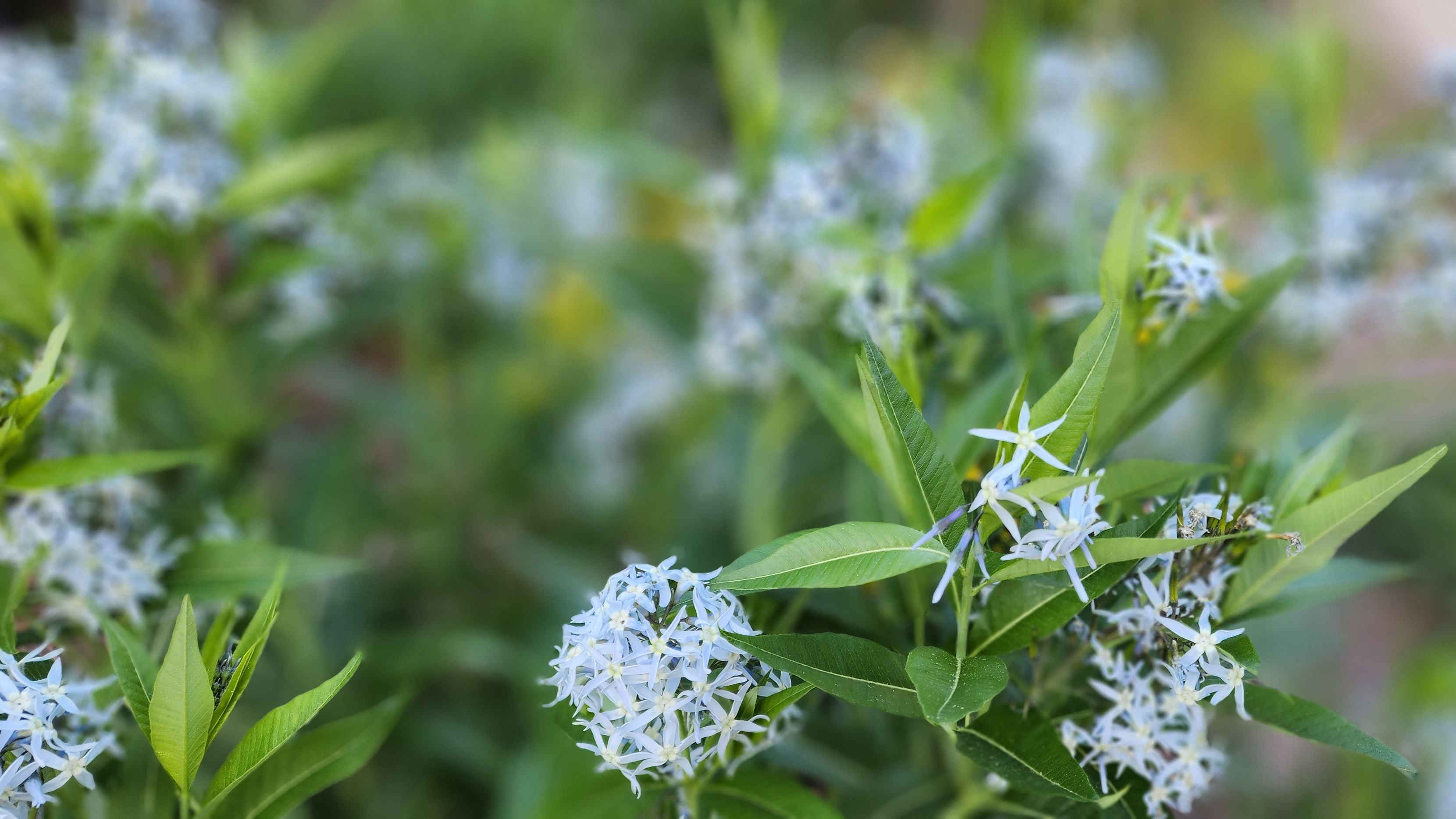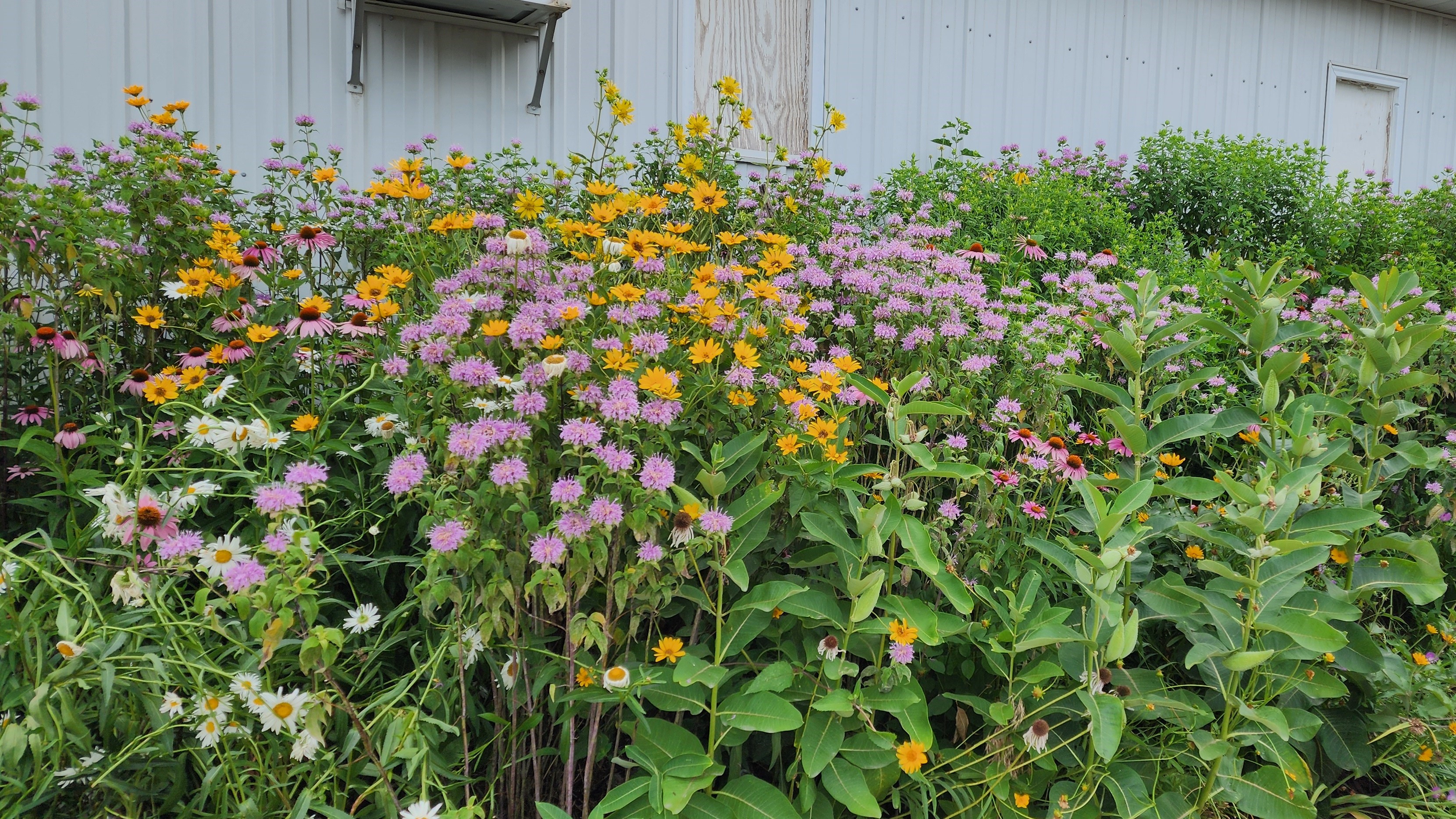1) Planning
Consider your goals – are you simply swapping out native plants in your tidy garden, trying to go full re-wilding or somewhere in between? Where is your habitat going – along a street/sidewalk, or the back of the yard? This helps decide the height of plants. How much sun does the area get – less than 6 hours means looking for shadier plants. How many different varieties can you fit to provide flowers all season?
2) Preparation
It’s best to start with a clean slate. Smother by digging and flipping or cover with plastic/tarp; remove turf with a sod cutter; spray glyphosate. Be realistic about how much space you are willing to transition in one go. Remember, this will not fill in overnight! Plan for regular watering in year one, potentially heavy weeding in years one and two and regular weeding after that.
3) Planting
With Plants – September is a really good time to source plants to put in the ground because cooler weather gives them a chance to acclimate to their new home and set down roots to help overwinter successfully. You can usually find native plants for sale at this time. Spring also works but keep an eye on watering as weather warms to limit stress on the plants.
Always read the label to learn sun and moisture requirements as well as final height/width to know where to put each plant and how far apart. Too close and the plants may crowd each other out with none being successful; too far apart and they will never fill in and you may always be dealing with weeds.
With Seed – Northern plains prairie plant seeds evolved to overwinter on frozen ground, gradually being worked into the soil through the gradual freeze/thaw cycles of the cold season. Virtually all require at least 30 days of cold or freezing temperatures to germinate. Native wildflower and grass seed can be broadcast in November or December. Pay attention to oz/sq foot or lb/acre to help decide how much seed to purchase.
4) Patience
Even if you get plants in the ground in fall, you will not have a fully realized native prairie by the end of the next season. Keep track of weeding needs so your new babies don’t get overgrown. Water as needed – if you water too frequently, the plants won’t be encouraged to develop a deep root system and won’t be as drought tolerant in the long run. Check soil for dryness as opposed to a set schedule.
5) Prairie!
Properly cared for, a native planting can come to almost full fruition after just a few years. Mowing during the first year as weeds grow taller than the natives will help them better compete and establish without disturbing the soil and young seedlings – once the prairie is more established you can pull or spot-cut as needed. As the prairie develops and fills in, use late April and early May as a time to cut back and clean up dieback – this can clear out buildup to ‘mimic’ burning and maintain pollinator and beneficial bug populations in the habitat.
Nebraska Pollinator Habitat Certification
Resources
Publications & Articles
Nebraska Extension experts are unable to design a pollinator habitat for you. However, you can find the resources on how to start a habitat below.

Pollinator Habitat Video Resources
Pollinator Gardening: Creating Pollinator Habitat
Pollinator Gardening: Pollinator Blooms for All Seasons
Pollinator Gardening: Bees, Butterflies, and Beyond
